Through the rise and fall of New York’s Jewish delis, Gottlieb’s in South Williamsburg remains unchanged.
Gottlieb’s in South Williamsburg is a member of an endangered New York class: the Jewish deli, that institution of brusque countermen, half-sour pickles, and sodium-packed, brined-meat sandwiches that make thirsty customers reach for a can of Dr. Brown’s Cel-Ray soda. Its wood paneling and glass display cases evoke the past, simply because the deli hasn’t been remodeled since it opened in 1962. Whenever I sit down to a corned beef sandwich and a plate of pickles at one of its tables, flanked by huddled groups of rabbinical men with flowing payot speaking Yiddish, I imagine my great-grandparents’ Eastern European shtetl. It seems perfectly preserved from another century, save perhaps for the chrome refrigerators and deli slicers.
Gottlieb’s is one of the few Jewish delis still clinging to a Yiddishkeit era. And as a cornerstone of the neighborhood’s Satmar Hasidic community, Gottlieb’s is a Glatt Kosher deli—the strictest Jewish dietary classification—an even rarer breed in the shrinking world of Ashkenazi dining.
The number of Jewish delis in the United States has plummeted, from 1,550 Kosher delis in New York City alone in 1931 to just a couple hundred delis—Kosher, non-Kosher, and everything in between—in the entire United States. Food chroniclers have long noted their decline, from journalist David Sax’s travelogue Save the Deli to Erik Anjou’s documentary Deli Man.
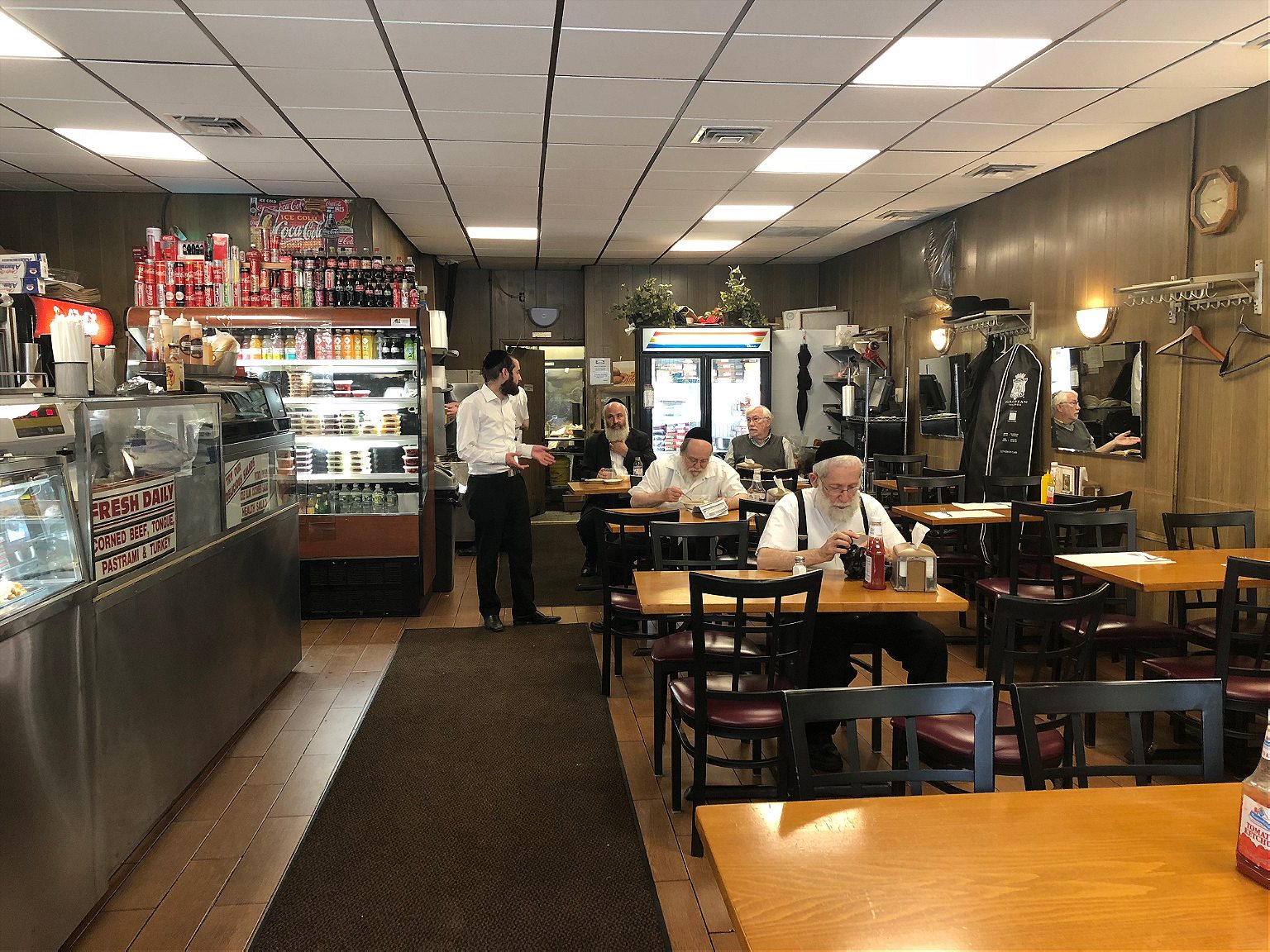
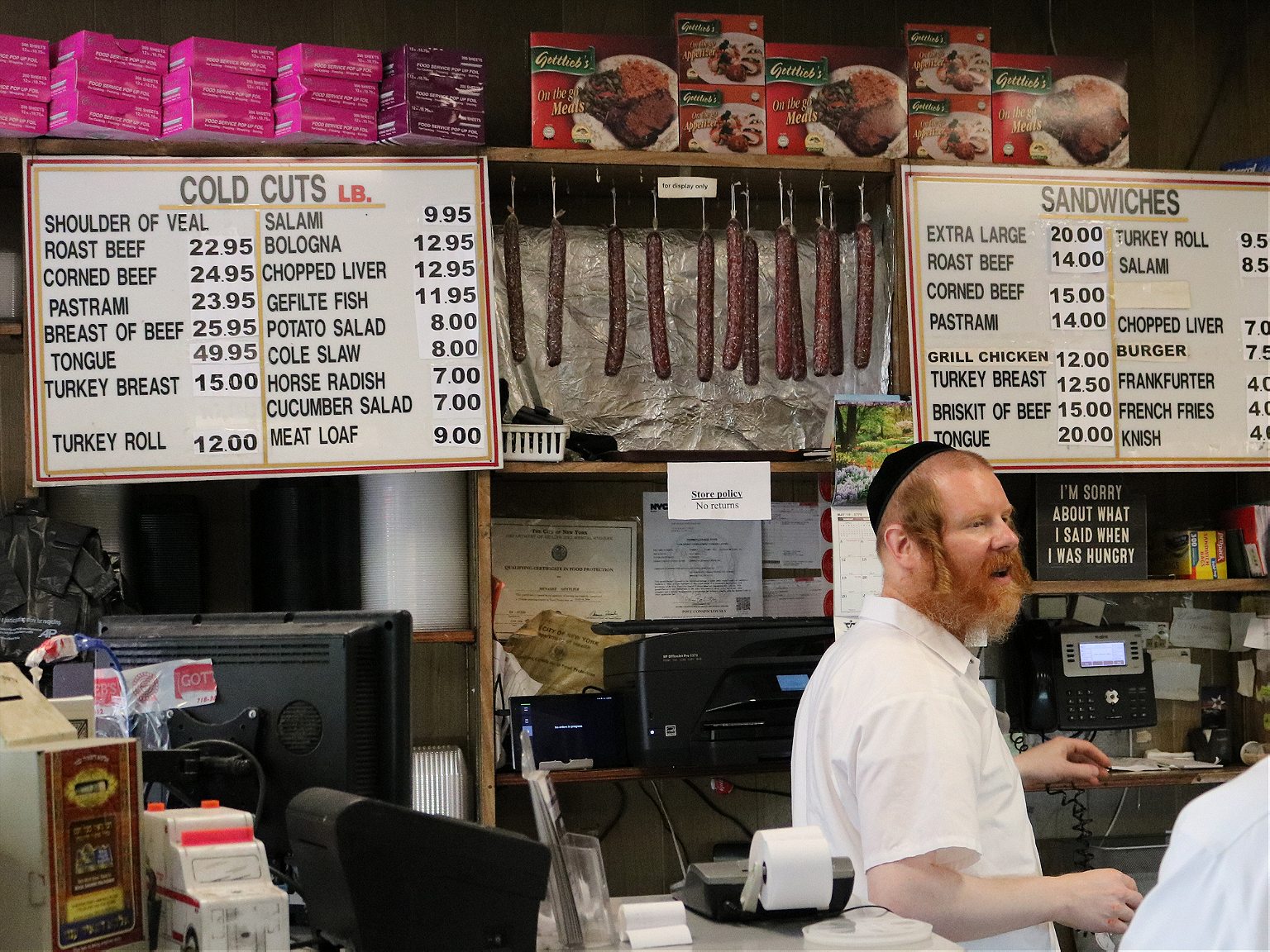
Jewish delis started out to serve the diaspora from Eastern Europe. But as Judaism evolved in the New World, so did the deli, splintering into Glatt Kosher, Kosher, Kosher-style, and even goyish varieties. But perhaps by not changing a thing except for the occasional menu item since it opened over a half-century ago, Gottlieb’s has thrived.
Its protection comes from its neighborhood. Gottlieb’s is just a few blocks away from the boutiques of Williamsburg, but it feels like a different world. South of the Williamsburg bridge, Fedoras are replaced by shtreimel fur hats, and the weekly Shabbat air-raid siren is a callback to a time before Bedford Avenue got its first artisanal hot-chocolate store.
Gottlieb’s is not a tourist stop like Katz’s, where people can get a picture with their grotesquely large sandwich under a sign that reads “Where Harry Met Sally…Hope You Had What She Had!” As star delis like Carnegie and Stage, and their non-Kosher pastrami Reubens dripping with Swiss cheese, close in their more diverse neighborhoods one-by-one, Gottlieb’s lives on.
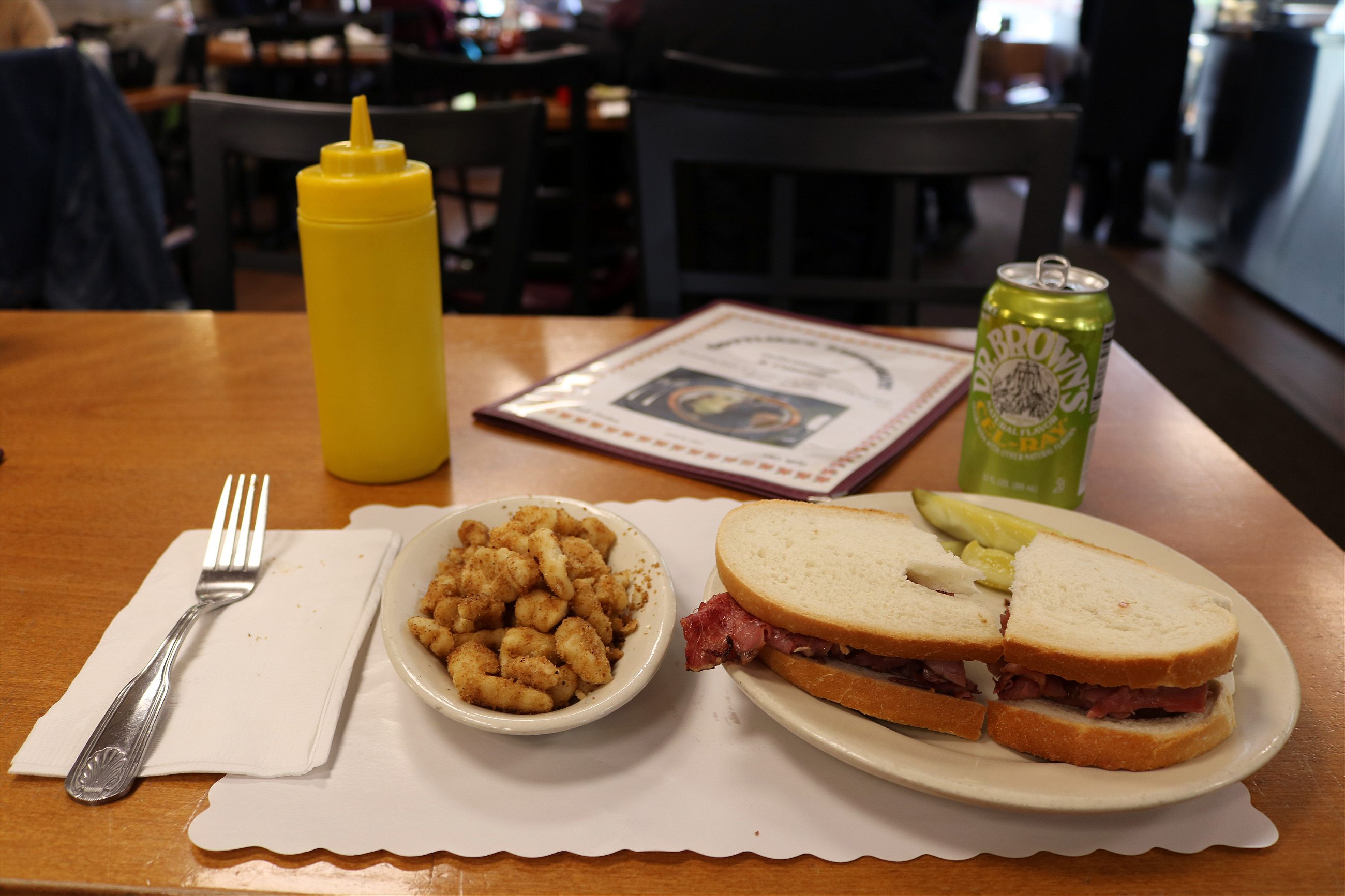
The deli’s namesake, Zoltan Gottlieb, was Hungarian, and spent World War Two in a concentration camp. After being sent to a displaced persons camp in Germany following the war, Gottlieb moved to the United States in 1949. He founded Gottlieb’s as a Glatt Kosher deli in 1962, and it has stayed that way. His son, Joseph, is now the owner, and Joseph’s son, Manesha, runs the operation. When I spoke with Joseph at Gottlieb’s last fall, he told me that the deli now attracts the occasional “yuppie” and tourist looking for kosher food, but mostly exists to serve the Hasidic community. As he put it, the restaurant “fits like a glove in this neighborhood.”
Like Gottlieb, many of the Jews who came to the U.S. after the Holocaust were Hasidic, a sect of Ultra-Orthodoxy that adheres to stricter dietary restrictions than other observant Jewish sects. The typical Jewish kashrut laws include not mixing meat and milk, humanely slaughtering animals, and about 612 other rules. The Hasidic variation, Glatt Kosher, includes even more rules regarding the smoothness of the lungs of slaughtered animals, as well as demanding that a kashrut supervisor called a mashgiach work on site at all times.
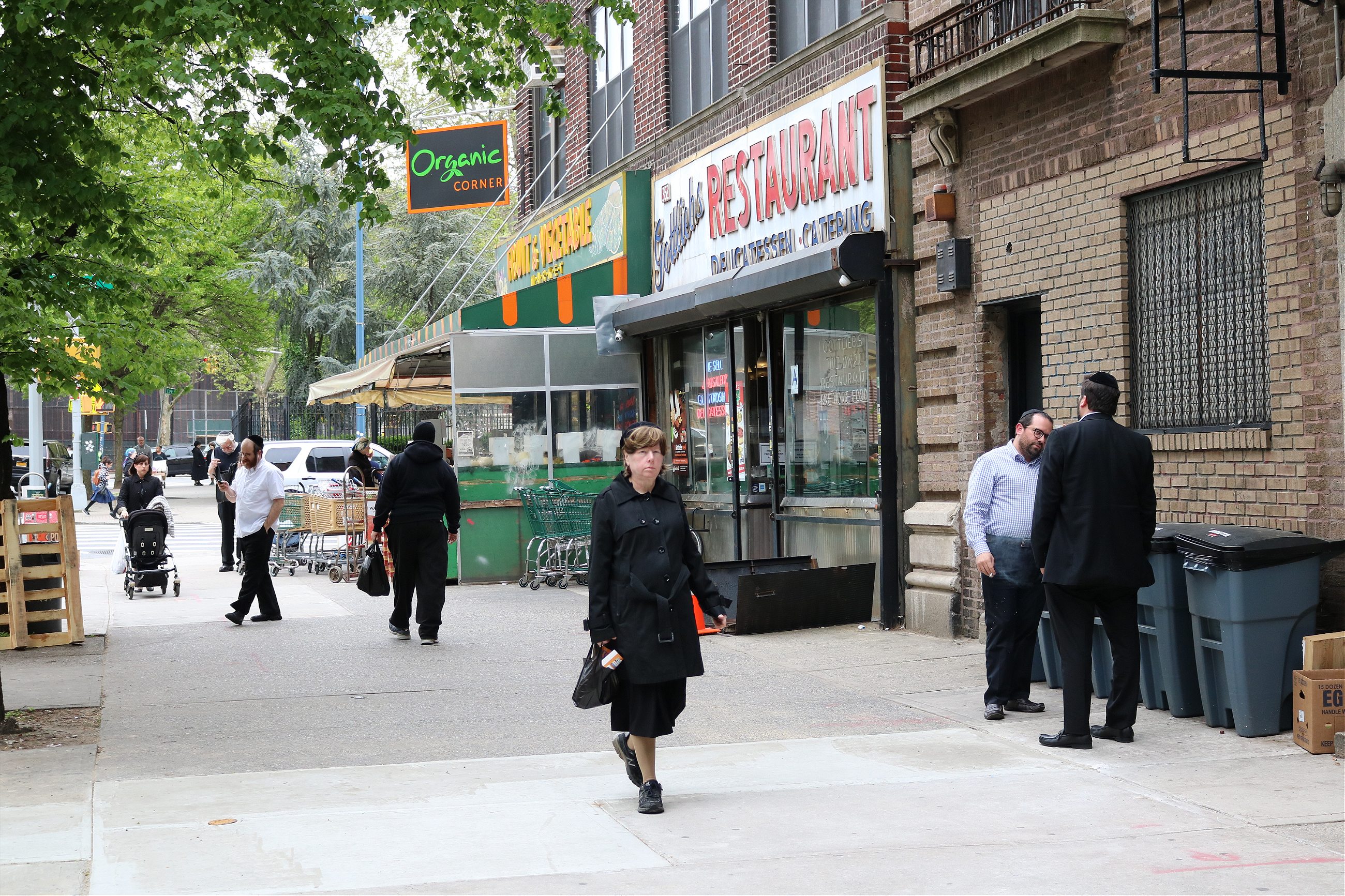
When Hasidic Jews like Zoltan arrived in the United States, they discovered that not only were existing Jewish delis not serving Kosher food up to their standards, but that many of the Jewish delis were serving forbidden, traif (non-kosher) food, like the namesake sandwich of Reuben’s on 58th Street, a delicious shanda of meat topped with cheese.
The laxness of the dietary laws had a simple explanation: while the Hasidic Jews of Eastern Europe had been cloistered in their own communities before the Holocaust, Jews who had arrived in the U.S. before World War II had spent decades in the American test kitchen alongside other immigrants. By 1962, when Gottlieb opened his restaurant as a haven for the Glatt Kosher-abiding Jews of Williamsburg, the American Jewish deli had already been evolving for nearly a century.
The first delicatessens came to the United States after the Civil War via German immigrants, many of whom were Jewish. When two million Jews emigrated from the Russian Empire between 1880 and 1920, they brought their own foods. The modern deli staple of pastrami came from Romania, for example, and it was traditionally made from goose. The common denominator among these delis was the Jewish Kosher dietary restrictions (Kosher, not Glatt Kosher).
Pushcart operators would roam the Lower East Side, selling knishes and pickled herring wrapped in newspapers. However, around 1900, New York’s mayor imposed strict regulations to clean up the informal economy on the streets, and the first delicatessens opened in response to the new restrictions. Eventually, the Jewish foods of Europe came together under the shared roof of the deli.
In 1960 there were only about 300 Kosher and Glatt Kosher delis left in New York. Today there are just a couple dozen.
Delis were popular for a simple reason: They had great food for great prices. Ben Parker was 18 when he opened the first iteration of Ben’s Best in the Bronx (which, at the time, was 80 percent Jewish, according to Sax). His son, Jay Parker, told me in a phone interview that when Ben’s Best started to become successful, his father went out and bought a used Ford for $50. (He had to park it five blocks away, though, because his customers would have told him, “If you can afford a car, you must be charging too much.”) Ben would go on to open the more famous version of Ben’s Best in Queens, which closed last summer after 73 years. According to Jay, who took over from his dad in 1979, he couldn’t keep the deli open anymore because new bike lanes cut into on-street parking.
Over time, though, Judaism in the U.S. began to outgrow its laws. Kosher observance had already been declining, with each generation shedding aspects of observance. Between 1914 and 1924 alone, 30 percent of Jews stopped keeping kosher, as Ted Merwin writes in Pastrami on Rye: An Overstuffed History of the Jewish Deli. In 1960, two years before Gottlieb’s opened, there were only about 300 Kosher and Glatt Kosher delis left in New York, and today, there are just a couple dozen.
Although delis started out as a way to meet Jewish immigrants’ dietary needs, they soon melded into New York’s culinary and cultural scene as the religious aspect of the food faded. Delis became synonymous with show business, with Manhattan Midtown staples such as the Carnegie Deli serving Mel Brooks and Carl Reiner as they started out in television writing. The Stage Deli, just down the street, named sandwiches after Joe DiMaggio and Marilyn Manson. These delis had no interest in keeping strict (and expensive) restrictions in its kitchen. If DiMaggio wanted a corned beef sandwich and a slice of cheesecake, he was going to get it. These delis became “kosher-style” delis, as in, not kosher at all.
Just as the kosher-style deli reached its cultural zenith, though, the Jewish deli in its myriad forms began to precipitously decline. Sax writes that the rise of supermarkets in the 1950s meant that people no longer had to go to the delicatessen to pick up their groceries and stop for a nosh. He also suggests white flight from traditionally Jewish neighborhoods such as the Lower East Side pushed Jews into the suburbs. Prices of traditionally cheap cuts of meat like brisket and tongue skyrocketed with the rising popularity of Texas BBQ and a new export market in Asia. This, combined with ever-rising real estate prices in New York and the cost of kosher inspections, led to increasingly thin margins.
When it opened, Gottlieb’s was already somewhat old-fashioned in the world of Jewish-American delis. With the exception of Borscht-infused ripples from the Soviet Union, Zoltan Gottlieb was part of the last big wave of Jewish immigration to the United States. The original purpose for the deli had receded. Still, despite opening his deli at the end of a century-long tradition of Jewish culinary innovation, Gottlieb founded a restaurant that would last for decades.
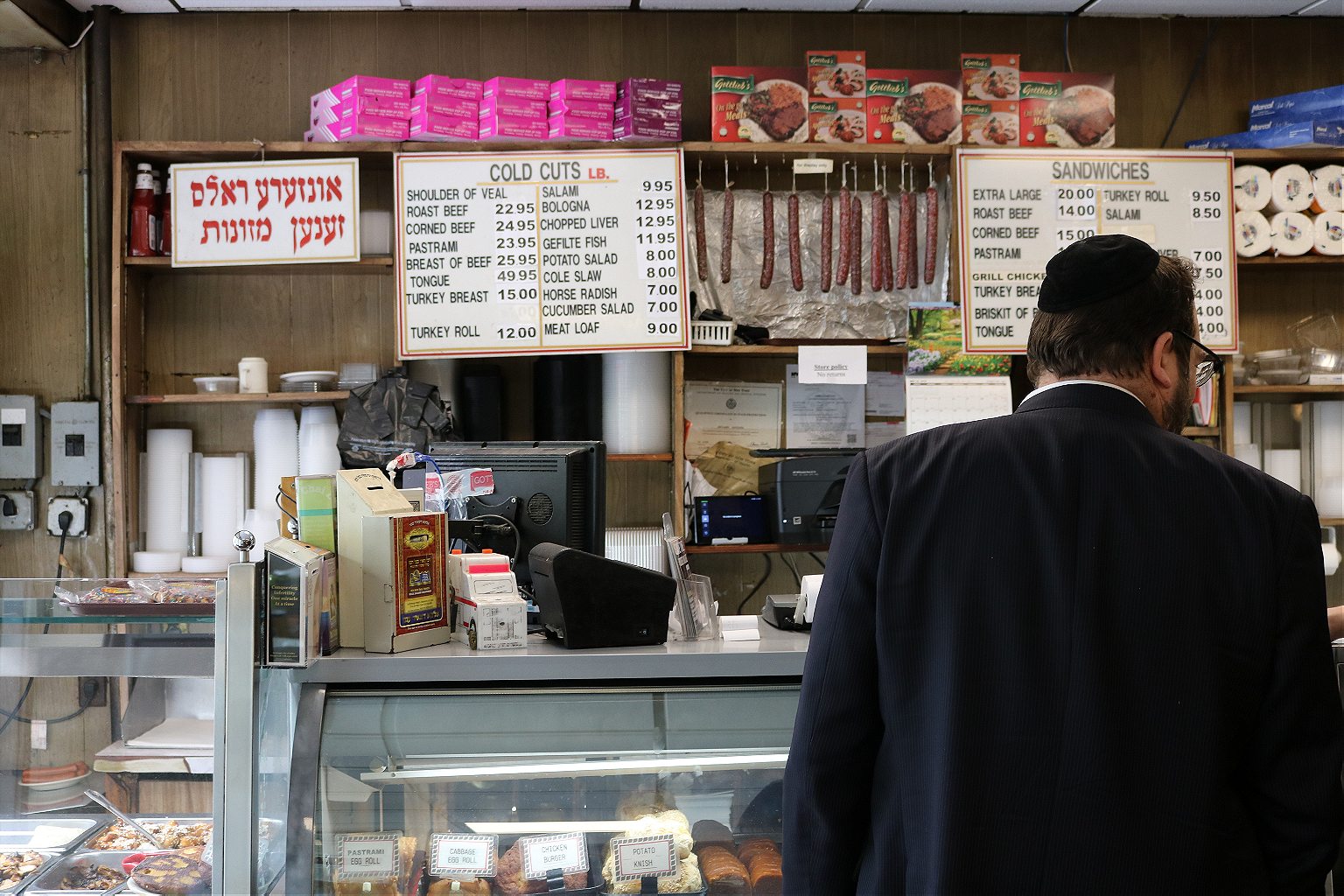
Jewish delis always had a mythical status in my home growing up. Visiting Carnegie Deli when I was 13 years old was just as important a rite of passage into reform Judaism as my Bar Mitzvah. My father—an avowed vegetarian—makes a point of stopping at Katz’s Deli outside of New Haven at least twice a year to eat a combination corned beef-pastrami sandwich.
After moving to South Williamsburg, I realized that not all delis are echoes of the past, slowly being swallowed by acculturation. Gottlieb’s still exists for the same reasons the original Jewish immigrants created delis: out of religious dietary necessity. I eat at delis out of a sense of nostalgia, but Gottlieb’s clientele eat there because few restaurants in the city serve Glatt Kosher food. Gottlieb’s does. It has a captive customer base.
Of course, there is some appreciation of tradition involved. Gottlieb’s could cook any other food—Glatt Kosher cuisine doesn’t have to be Ashkenazi classics such as potato kugel, shlishkes, and lukshon with brazel. For example, Gottlieb’s added a few Chinese dishes to the menu, including chicken lo mein. (When I asked Joseph Gottlieb about the lo mein, he shrugged.) They take pride in their food. As Gottlieb says, “it must be good if we’ve been here for 56 years.”
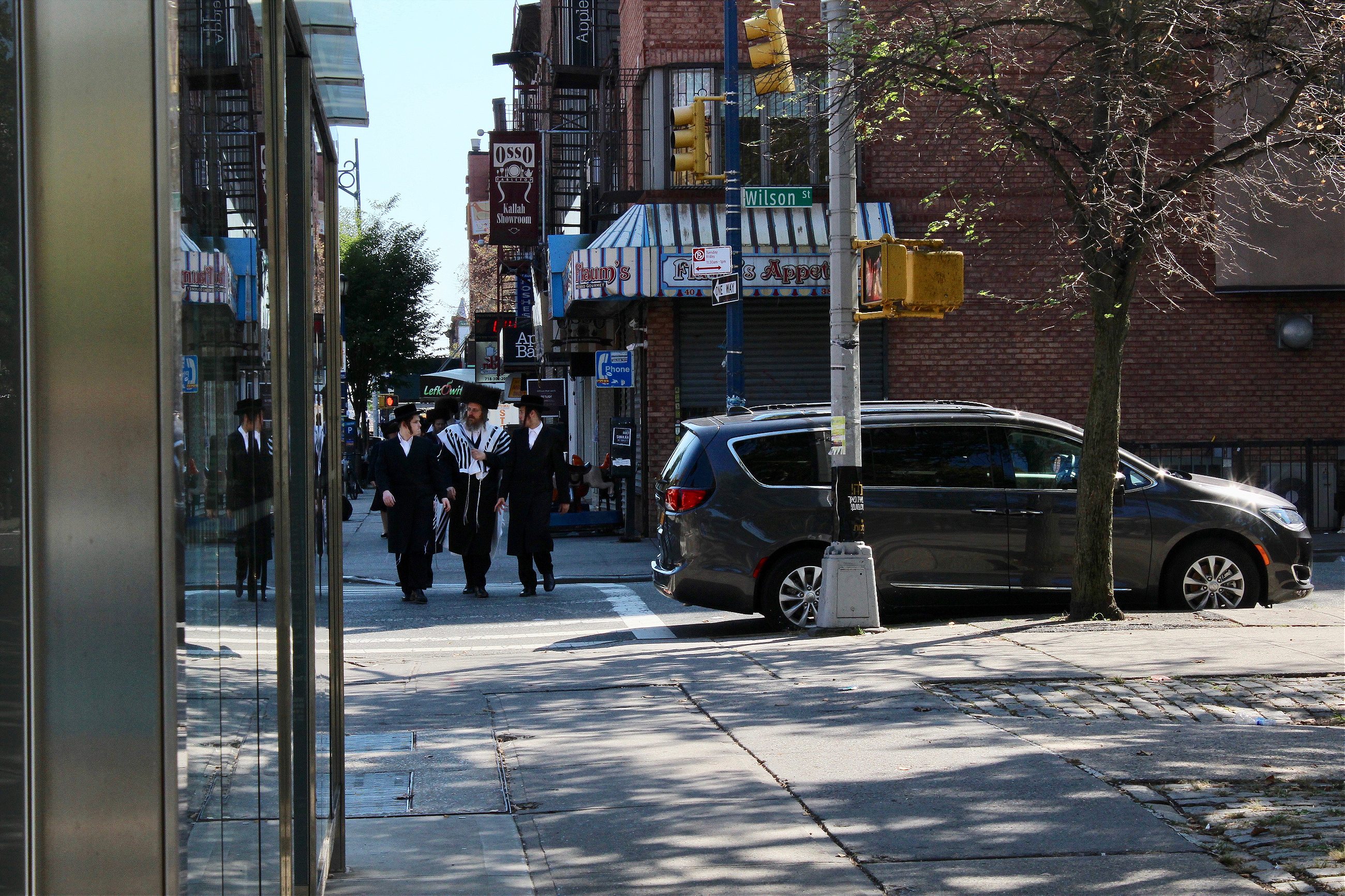
Other Glatt Kosher establishments that don’t serve traditional deli food have popped up around South Williamsburg, Crown Heights, and other Hasidic enclaves of New York. For example, after Hasidim discovered that tuna nigiri is a tasty alternative to gefilte fish, they began to open sushi spots en masse. The Borough Park restaurant Glatt a La Carte has a menu including pulled beef tacos, jambalaya, and chicken marsala.
Everyone enjoys the soothing embrace of tradition now and again, though, and Gottlieb’s satisfies on both the nostalgic and religious fronts. Perhaps because the shuttered Jewish delis of New York delivered only on the former, they had less staying power.
Even so, many surviving delis are adapting. Katz’s, for example, became a deli superstore and sold its air rights and neighboring lots for $17 million so a luxury developer could build an 11-story condo next door, ensuring that it can survive the skyrocketing prices of the Lower East Side. The 2nd Ave Deli opened a cocktail lounge that features mulled Manischewitz and mezcal. Mile End Deli’s menu has some innovative twists, such as gourmet pigs-in-blankets (with maple mustard). David’s Brisket House was bought by two Yemeni business partners, who transformed the restaurant in the 1990s into what they describe as the only Halal Jewish deli in the world, catering to a unique customer base of devout Muslims, secular Jews, and Bed-Stuy’s predominantly African-American community.
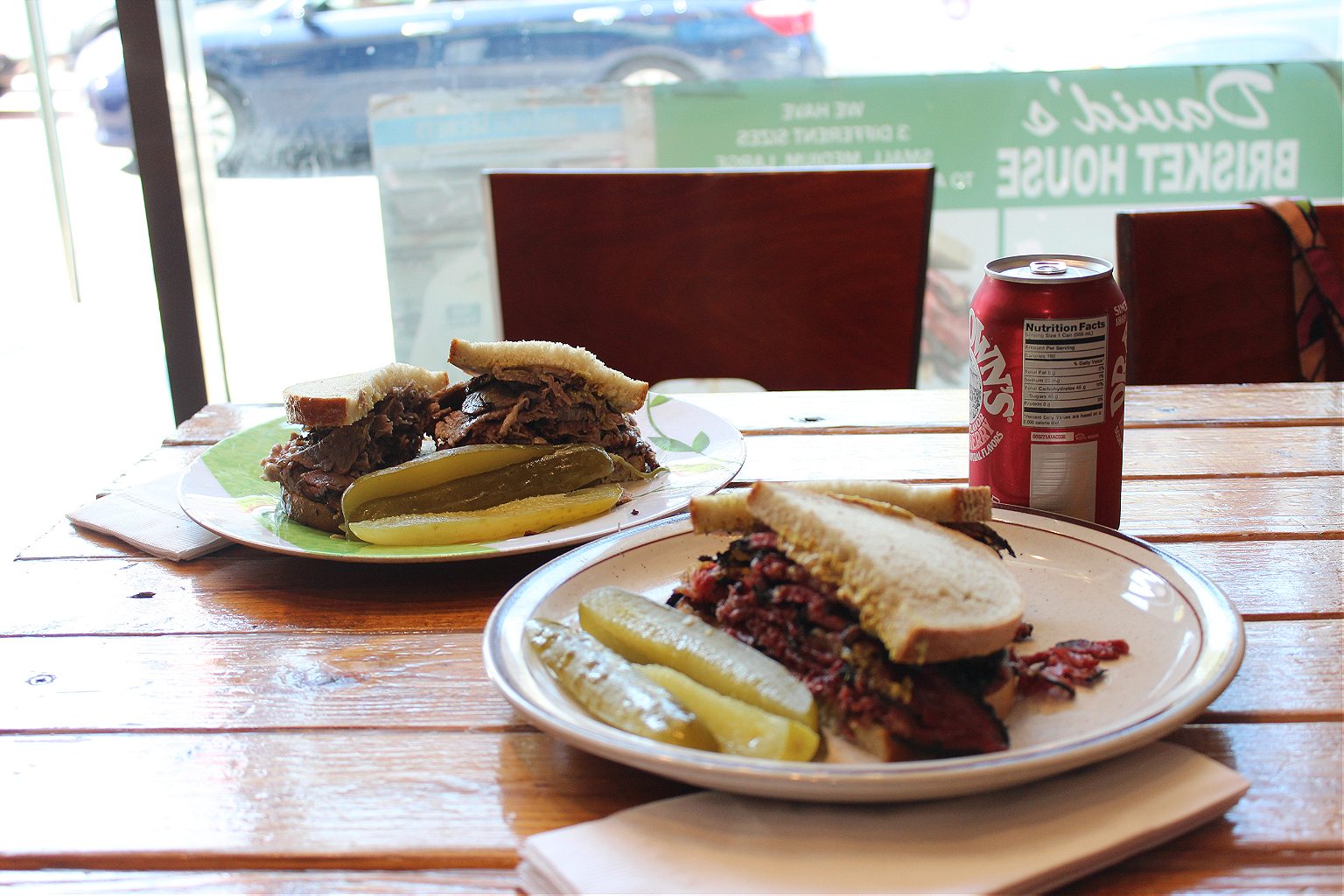
Gottlieb’s and other Glatt Kosher delis like it may be somewhat of an exception in the story of the Jewish deli. Since the first Jewish immigrants came to the United States, delis have restructured, rebuilt, and reinvented themselves. German food melded with Romanian and Russian. The Bronx moved to Scarsdale. The pushcart became the storefront. Kosher became Kosher-style.
Gottlieb’s has endured unchanged because of the loyalty of its Hasidic community. The neighborhood needs it, and it needs the neighborhood. There they remain, for now, locked in a mutual embrace of schmaltz, salt, and tradition.






